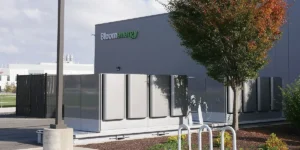Japan unveils plan to spend $33bn developing next-generation hydrogen or electric aircraft

The Japanese government has revealed a multi-trillion-yen plan to develop a “Made In Japan” regional aircraft powered by next generation technology such as hydrogen.
The government plans to partner up with the private sector to jointly invest ¥5trn ($33bn) over ten years to make a narrow-bodied aircraft that can hit the skies by 2035 — and all technology options are on the table, officials told news agency AFP.
“Nothing concrete has been decided yet, but possibilities include hybrid electrics, hydrogen combustion, hydrogen fuel cell,” an official from the ministry of economy, trade and industry (METI) said.
But hydrogen does appear to be in the foreground of discussions, with METI telling AFP that it is important for the country to “build next-generation aircraft based on technologies where Japan is competitive, while also contributing to the decarbonation of air transport”.
“In the new business fields of carbon-neutral technologies, including hydrogen, we aim to take a leading position”, added minister for economy, trade and industry, Kazuchika Iwata at a press conference yesterday (Wednesday).
“For the Japanese aircraft industry to achieve sustainable growth, we cannot stay satisfied with our position as a parts supplier.”
Article continues below the advert
A official strategy on the new aircraft programme will be announced soon by METI.
Significantly, the new programme envisages Japanese aircraft makers partnering with global players to develop the plane, apparently in an effort to sidestep the problems faced by Japanese heavyweight Mitsubishi Heavy Industries (MHI) in its SpaceJet programme (see below), which was scrapped in February last year after a decade of delays and problems.
There are several international companies developing hydrogen technology for regional aircraft, most significantly Anglo-American aviation firm ZeroAvia and US-based Universal Hydrogen.
ZeroAvia is currently developing a 19-seater hydrogen fuel-cell-powered aircraft for regional flights, but is also working on scaling up its technology to power larger aircraft capable of carrying 60-90 passengers.
Universal Hydrogen and ZeroAvia both carried out flight tests of their fuel cell-powered aircraft last year, with the aim of bringing them into service in 2025.
Meanwhile, budget airline Easyjet and engine maker RollsRoyce are collaborating on the development of a hydrogen-fuelled jet combustion engine, while Airbus is developing hydrogen-powered aircraft with a planned commissioning year of 2035.
SpaceJet, originally called the Mitsubishi Regional Jet programme when it launched in 2007, aimed to develop a Japanese-made aircraft capable of carrying up to 90 people, powered by conventional fossil fuel-powered jet technology.
But although the programme delivered one prototype aircraft, it experienced repeated delays and questions over its commercial viability.
SpaceJet received ¥50bn ($330m) in government funding research, but the technical and commercialisation of the scheme was shouldered entirely by MHI, which contributed to its failure, Japanese commentators said yesterday.




